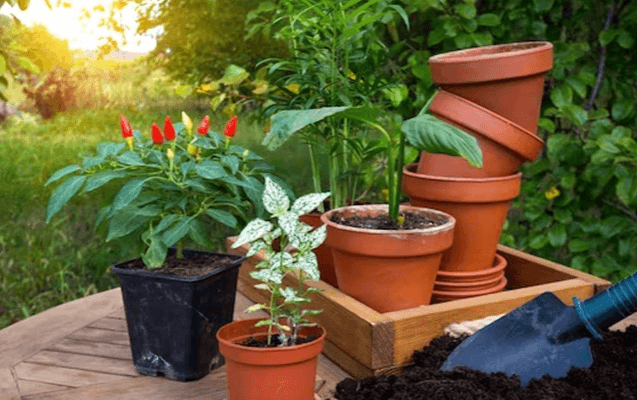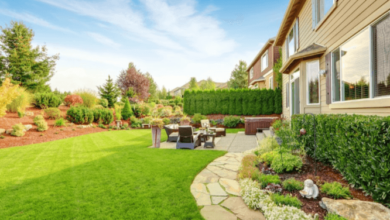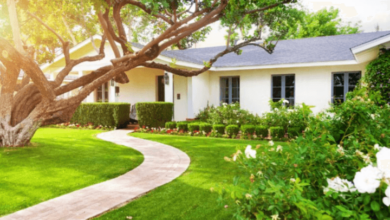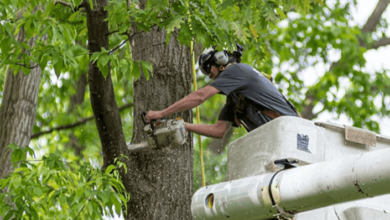How to Choose the Right Plants for Your Garden

Gardening is both an art and a science, and one of the most crucial decisions you’ll make as a gardener is choosing the right plants for your garden. The plants you select will determine not only the aesthetic appeal of your space but also how easy it is to maintain, how well it supports local wildlife, and how it withstands the elements. Whether you’re a novice gardener or a seasoned green thumb, selecting the right plants can be a daunting task. But don’t worry; this guide is here to help you make informed decisions that will lead to a flourishing garden that reflects your personal style and meets your gardening goals.
Understanding Your Garden’s Unique Environment
Before you even step foot in a nursery or garden center, the first step in choosing the right plants for your garden is to thoroughly understand the specific conditions of your gardening space. Every garden is unique, and the plants that thrive in one environment may struggle in another. Here’s what you need to consider:
Assessing Soil Type and Quality
The foundation of any successful garden is healthy soil. The type of soil in your garden plays a significant role in determining which plants will thrive. Soil can be sandy, clayey, loamy, or a combination of these textures. Each type has its characteristics:
- Sandy Soil: Drains quickly, often nutrient-poor. Ideal for drought-tolerant plants like lavender, rosemary, and many succulents.
- Clay Soil: Heavy and retains water, which can lead to waterlogged roots. Suitable for moisture-loving plants such as willows, asters, and daylilies.
- Loamy Soil: Often considered the ideal soil type as it retains moisture but drains well. Most plants will thrive in loamy soil.
To determine your soil type, you can perform a simple test by feeling the soil or observing how it behaves when wet. Additionally, getting your soil tested for pH and nutrient content can help you understand what amendments might be needed to create a more hospitable environment for the plants you want to grow.
Understanding Your Garden’s Microclimate
Your garden’s microclimate is influenced by various factors, including sunlight, temperature, wind exposure, and proximity to structures. Understanding these microclimates will help you place plants in areas where they will be most likely to thrive.
- Sunlight: Determine how much sunlight different areas of your garden receive throughout the day. Some plants require full sun (at least 6 hours of direct sunlight), while others thrive in partial shade or full shade.
- Temperature: Gardens can have varying temperatures depending on their location and exposure. Some plants are more cold-tolerant, while others need warm conditions to thrive.
- Wind Exposure: Consider if your garden is exposed to strong winds. Wind can dry out plants and damage delicate foliage, so selecting wind-tolerant plants or creating windbreaks may be necessary.
Selecting Plants Based on Function
Once you’ve assessed your garden’s conditions, the next step is to think about the function of the plants you want to include. Plants can serve a variety of purposes in a garden, from aesthetic appeal to practical uses.
Ornamental Plants for Visual Appeal
Ornamental plants are chosen primarily for their beauty. When selecting ornamental plants, consider their color, texture, height, and form. A well-planned garden often includes a mix of these elements to create visual interest throughout the year.
- Flowering Plants: Choose plants that bloom at different times to ensure continuous color in your garden. Perennials like coneflowers, peonies, and hydrangeas are popular choices.
- Foliage Plants: Plants with interesting foliage can add texture and depth. Hostas, ferns, and ornamental grasses are excellent for creating contrast.
- Structural Plants: Incorporate plants with strong forms, such as shrubs or small trees, to provide structure and year-round interest.
Edible Plants for Harvesting
Many gardeners enjoy growing their own food. When selecting edible plants, consider your local climate and the space available. Some popular edible plants include:
- Vegetables: Tomatoes, lettuce, beans, and carrots are staples in many home gardens.
- Herbs: Basil, mint, rosemary, and thyme are easy to grow and can be harvested regularly.
- Fruits: Small fruit trees like apples or pears, or berry bushes like blueberries or raspberries, can provide delicious harvests.
Native Plants for Environmental Benefits
Choosing native plants for your garden can be beneficial for the local ecosystem. Native plants are adapted to your region’s climate and soil, require less maintenance, and support local wildlife, including pollinators like bees and butterflies. Examples of native plants vary by region, so research what’s native to your area.
Drought-Tolerant Plants for Water Conservation
In regions where water is scarce, or if you want a garden that requires less irrigation, drought-tolerant plants are an excellent choice. Succulents, cacti, and certain grasses are perfect for creating a low-maintenance, water-wise garden.
Low-Maintenance Plants for Busy Gardeners
Not everyone has the time to tend to a garden daily. If you’re looking for a garden that requires minimal upkeep, opt for low-maintenance plants. These plants are typically hardy, pest-resistant, and thrive with minimal care. Examples include daylilies, hostas, and ornamental grasses.
Considering Plant Compatibility
When choosing plants for your garden, it’s important to think about how they will interact with each other. Certain plants grow well together, while others may compete for resources. Here are some factors to consider:
Companion Planting
Companion planting is the practice of placing plants together that benefit each other. Some plants can repel pests, improve the flavor of neighboring plants, or provide shade. For example, planting basil near tomatoes is thought to enhance the flavor of the tomatoes and repel pests.
Avoiding Plant Competition
On the flip side, some plants may compete for resources like water, nutrients, or sunlight. For instance, planting two heavy feeders close together, such as corn and pumpkins, can lead to reduced yields. It’s essential to space plants correctly and ensure they are not competing for the same resources.
Planning for Growth and Spread
Understanding how large your plants will grow and how much space they need is crucial to avoid overcrowding. Overcrowded plants can suffer from poor air circulation, leading to diseases. Make sure to consider the mature size of the plants and plan your garden layout accordingly.
Seasonal Considerations for Plant Selection
Gardens change with the seasons, and selecting plants that provide year-round interest will ensure that your garden is always vibrant.
Spring Bloomers
Spring is a time of renewal, and planting spring-blooming flowers like tulips, daffodils, and crocuses will bring early color to your garden.
Summer Showstoppers
Summer is when many gardens reach their peak. Choose summer-blooming perennials, annuals, and shrubs like roses, sunflowers, and hydrangeas to ensure your garden is full of life.
Fall Foliage
Fall can be one of the most beautiful seasons in the garden. Plant trees and shrubs with vibrant fall foliage, such as maples, oaks, and burning bush, to enjoy a spectacular display of color.
Winter Interest
Don’t forget about winter! Include plants that provide winter interest, such as evergreens, holly with bright berries, or ornamental grasses that catch the frost.
Incorporating Personal Style and Preferences
Your garden should be a reflection of your personality and preferences. While it’s important to choose plants that will thrive in your garden’s conditions, it’s equally important to select plants that you love. Consider the following:
Color Preferences
Do you prefer a garden full of vibrant colors, or do you lean towards a more subdued palette? Choose plants that match your color preferences and create a harmonious look.
Garden Theme
If you have a specific theme in mind for your garden, such as a cottage garden, a Mediterranean garden, or a Japanese garden, select plants that fit that theme. Research the types of plants typically used in your chosen style and incorporate them into your design.
Maintenance Level
Be honest about how much time you’re willing to spend in your garden. If you prefer low-maintenance gardening, choose plants that are easy to care for and don’t require frequent pruning, deadheading, or watering.
FAQs
How do I determine the right plants for my garden’s soil type?
To determine the right plants for your soil, start by testing your soil’s texture and pH. Based on the results, choose plants that thrive in your specific soil conditions, whether sandy, clayey, or loamy.
What are the best plants for a low-maintenance garden?
For a low-maintenance garden, choose plants that are hardy, pest-resistant, and require minimal watering and pruning. Examples include ornamental grasses, succulents, daylilies, and hostas.
Can I grow vegetables and flowers together in the same garden?
Yes, you can grow vegetables and flowers together. Companion planting, such as planting marigolds near tomatoes, can benefit both crops by attracting pollinators and deterring pests.
What are the benefits of using native plants in my garden?
Native plants are adapted to your local climate and soil, require less water and maintenance, and provide essential habitat for local wildlife, including pollinators like bees and butterflies.
How do I choose plants that will bloom at different times of the year?
Select a variety of plants with different bloom times. Choose spring-blooming bulbs, summer perennials, fall foliage plants, and winter-interest evergreens to ensure year-round beauty.
What should I consider when planning a garden layout?
When planning your garden layout, consider the mature size of plants, their sunlight and water needs, and their compatibility with neighboring plants. Ensure proper spacing to avoid overcrowding and encourage healthy growth.
Conclusion
Choosing the right plants for your garden is a journey that combines knowledge of your garden’s unique environment with your personal preferences and gardening goals. By understanding your soil, climate, and the specific needs of different plants, you can create a garden that not only thrives but also brings you joy throughout the seasons. Whether you’re looking for low-maintenance options, vibrant blooms, or a bountiful vegetable garden, careful planning and plant selection will set you on the path to gardening success.





